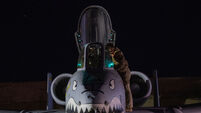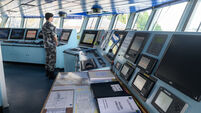Space lab mission accomplished
The crews of the US space shuttle Atlantis and international space station Alpha yesterday entered the science laboratory Destiny for the first time after it was attached to its new home.
‘‘The lab looks and feels and smells great, and looks like all the hard work has really paid off,’’ shuttle commander Kenneth Cockrell said after he entered the lab, whose hatch was opened by station commander Bill Shepherd.
‘‘It’s a beautiful piece of hardware in here.’’
‘‘Great first moment here,’’ said Mission Control in Houston after the astronauts went inside the lab.
Before the astronauts made their entry, they donned goggles to protect their eyes from any floating debris inside. But no such debris was found in the bright and pristine lab.
The two crews planned to spend about eight hours inside Destiny to finish setting up its computers and systems.
The crews had already worked late into Saturday night to activate various critical laboratory systems, most notably the cooling equipment.
They had to hurry because of the near-100F temperature inside the lab, the result of heater problems. Today Destiny’s cooling system was operating perfectly.
Cockrell and pilot Mark Polansky today planned to raise the space station’s altitude by firing Atlantis’ jet thrusters.
The lab was attached to the space station during a tense seven-hour space walk.
Astronaut Marsha Ivins used the shuttle’s robot arm to slowly lift the lab from its berth in Atlantis’ payload bay while spacewalkers Thomas Jones and Robert Curbeam Jr helped guide it in place and make connections between the lab and Alpha.
Destiny, which is 28 feet long and 14 feet in diameter, is the most treasured piece of the space station.
It will enable astronauts and cosmonauts to begin major science work aboard Alpha.
No experiments were brought on the lab because of the shuttle’s payload weight limitations. The first experiment is due to arrive in March.
Besides being a hub for science, the lab holds 13 computers that will enable NASA’s Mission Control to take over control of the space station from the Russians, probably within the next two months.
The lab will also serve as a much-needed fourth room for Alpha’s three-man crew, which has been in space since November 2.
‘‘Destiny has travelled a long road, and it’s nice to see that it has, indeed, reached its final destination,’’ Mission Control told the astronauts.













